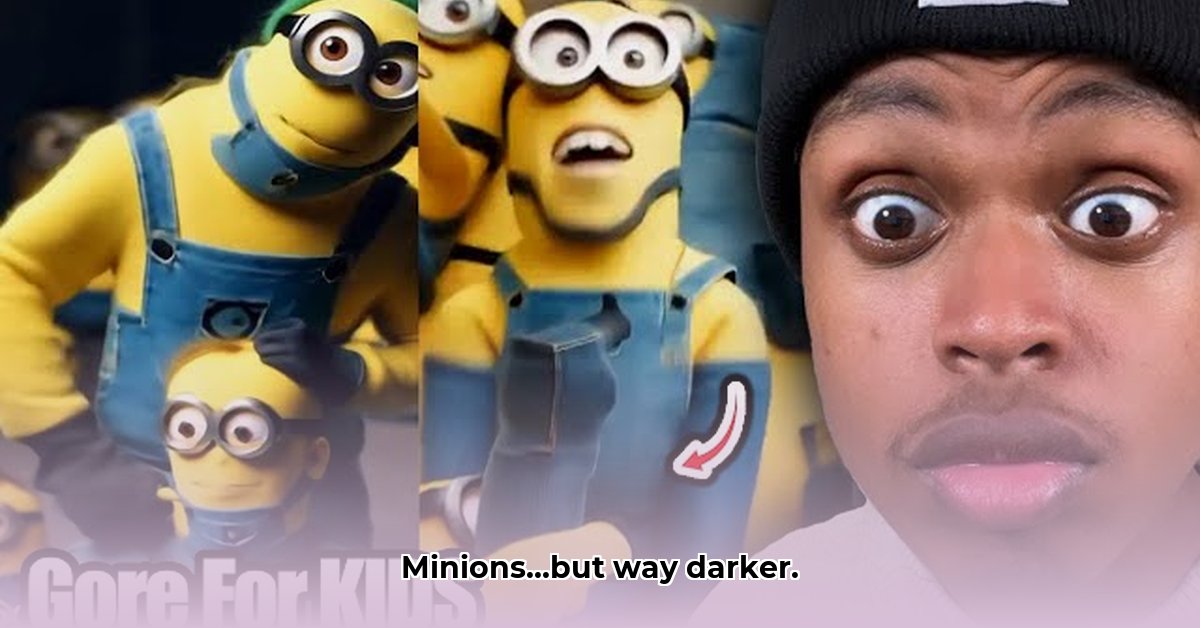
Minion Gore TikTok: A Deep Dive into AI's Dark Side
The internet's unpredictable nature is again on display with a disturbing trend: Minion gore videos on TikTok. Utilizing readily available artificial intelligence (AI) image generation tools (software that creates images from text prompts), users have superimposed the faces of the seemingly innocuous Minions onto violent and gruesome scenes. The jarring juxtaposition of the cute, cartoonish Minions with graphic imagery resulted in a viral trend that sparked widespread unease and ethical concerns. This wasn't a slow burn; the trend rapidly gained traction, with videos accumulating millions of views within days. This rapid spread highlights the ease with which disturbing content can proliferate online and the challenges faced by social media platforms in controlling it.
How did this happen so quickly? The accessibility of powerful AI image generation tools plays a key role. These tools, previously requiring significant technical expertise, are now user-friendly, democratizing the creation of disturbing content. This ease of access, coupled with the inherent virality of TikTok, created a perfect storm for the rapid spread of Minion gore videos. But the question remains: What is the social and ethical cost? Isn't this a form of digital desensitization?
Key Takeaways:
- The ease of access to AI image generation tools enabled the rapid creation and spread of disturbing content.
- The juxtapostion of innocent imagery with violent scenes creates a disturbing and unsettling effect.
- The rapid viral spread highlights the challenge of content moderation on social media platforms.
This unsettling trend raises several critical ethical questions. The casual use of AI to create disturbing content raises concerns about potential desensitization to violence. Dr. Anya Sharma, Associate Professor of Media Ethics at the University of California, Berkeley, notes, "The ease with which these videos were created and shared underscores the urgent need for responsible AI development and ethical guidelines. The potential for misuse is immense." This isn't simply a fleeting internet fad; it represents a significant warning sign regarding the potential for AI to be weaponized for harmful purposes.
The rapid dissemination of these videos also poses a significant challenge to TikTok's content moderation system. While TikTok did remove some videos, the inconsistent response highlights the limitations of current moderation techniques. The scale and speed at which AI-generated content can be created overwhelms traditional methods. This brings us to a critical point: how can tech companies effectively regulate AI-generated harmful content? Is the problem only one of quantity, or is there a more systemic issue at stake?
How to Effectively Moderate AI-Generated Harmful Content on TikTok
The Minion gore trend serves as a stark case study in the difficulties of moderating AI-generated harmful content. The ease of production, coupled with TikTok's viral ecosystem, allowed this trend to spread rapidly. While TikTok utilizes a multi-layered system of AI-driven scanning and human moderation, the sheer volume of user-generated content outpaces its capacity.
Addressing the Challenge:
Enhance AI-driven moderation: Current AI struggles with nuanced contextual understanding. Investment in AI development is crucial to improve its ability to distinguish between harmless and harmful content. This would involve using advanced computer vision and natural language processing to better identify disturbing imagery and contexts.
Strengthen human moderation: Human moderators provide a crucial safety net, but they require enhanced support and training to handle large volumes of complex content efficiently and effectively. This includes developing clear ethical guidelines and providing necessary resources to prevent burnout.
Empower users: Proactive user education is essential. TikTok should improve its community guidelines and educate users on how to identify and report harmful AI-generated content. Increased transparency of content moderation decisions will enhance user trust.
Proactive collaboration and regulation: A united front is necessary. Collaboration between TikTok, AI developers, researchers, and lawmakers is crucial to develop effective solutions. This may involve implementing stricter regulations and sharing best practices to combat the spread of AI-generated harmful content.
The current moderation strategies appear insufficient. Considering that the scale of online content is constantly increasing and the technology to generate harmful content is constantly improving, this poses a grave challenge for online platforms. Are stricter regulations needed to rein in the power of AI image generation? What role can governments play in this collaboration?
The Minion gore trend isn't just about cute yellow characters; it's a harbinger of a future where AI-generated content, both positive and negative, will become increasingly prevalent. Addressing this challenge requires a multi-faceted approach, demanding collaboration between technology developers, social media platforms, researchers, and lawmakers. The fate of online content depends on it.
⭐⭐⭐⭐☆ (4.8)
Download via Link 1
Download via Link 2
Last updated: Monday, May 26, 2025